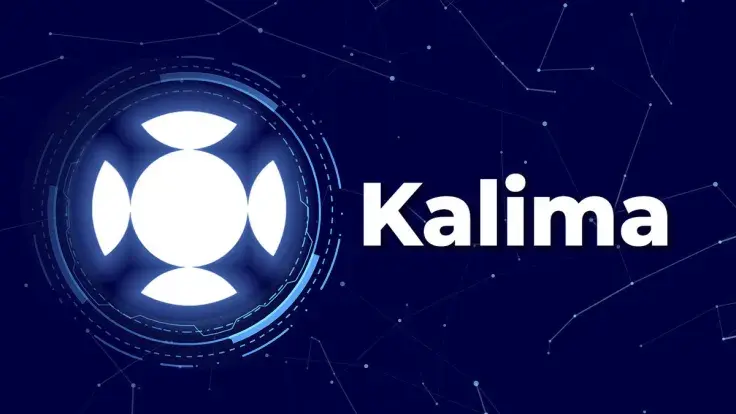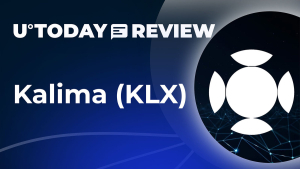
Kalima (KLX), a new-gen blockchain with smart contracts that addresses the usage of decentralized systems in the “Internet of Things,” unveils the next phases of its developments and explains how to join its progress.
Kalima (KLX) blockchain team unveils roadmap with staking, bridges and more
Launched in Q4, 2022, Kalima (KLX) is a delegated proof-of-stake (DPoS) blockchain based on a distributed ecosystem of validators. Its technical design includes a network of blockchains with the Kalima MainChain (execution and consensus layers) and PrivaChains (multiple application-specific sub-blockchains that work not unlike Avalanche’s Subnets and Polygon Supernets).
Kalima Blockchain can be installed on IoT devices, mobile devices, gateways, web servers and cloud computers around the world to create a new decentralized network providing real world qualified data to enterprises. It’s a low consumption blockchain network that allows to develop and execute client-side smart contracts, adding value to data at the source.
Kalima Blockchain is the most adapted blockchain for enterprises and IoT, the KLX is the backbone of its global network. Kalima is building a decentralized network optimized to meet current and future global enterprise requirements.
PrivaChains in Kalima (KLX) can interact with each other as well as with the other public blockchains: Bitcoin (BTC), Ethereum (ETH), Polygon (MATIC) and so on. As such, Kalima (KLX) provides Web3 applications with versatile, robust and flexible smart contracts. Also, it can fuel complex systems of IoT devices, including Android and iOS smartphones, supercomputers, LoRaWAN gateways, industrial networks and so on.
In March 2023, the Kalima (KLX) team unveiled its roadmap for the next few years. First of all, Kalima (KLX) is going to launch the Kalima Network with 100 validation pools. It will boast Master Nodes and Validator Nodes: 40 million KLX in stake will be required to launch a Master Node, while Validator Node activation will be 90% cheaper. Rewards will be distributed proportionally: Master Nodes will get 0.98 KLX per block, while Validator Nodes will be rewarded with a 0.02 KLX bonus.
Also, the Kalima (KLX) ecosystem is working towards the “bridge” which is the launch of the Kalima Main net (The Kalima MainChain) and the bridge from the ERC20 KLX token to the native KLX token based on the Kalima Blockchain. The bridge is planned for 2024. Once the bridge is live, all KLX token holders will be able to move their assets to Kalima (KLX).
Kalima (KLX) launched decentralized governance: What is the role of KLX?
Kalima (KLX) blockchain will enforce his governance to a 100% decentralized governance. All KLX holders will be able to vote in general governance proposals about crucial upgrades for holders, stakers, dApps users and developers.
Namely, the scope of questions up for referendum will include multiple aspects such as consensus design parameters, foundation fund spending and whitepaper updates. The decentralized governance system is poised to ensure fair and inclusive participation of all interested community enthusiasts. First governance votes will take place on the 6th of April 2023 regarding the governance process.
Join the Kalima Network and become an architect of the Web3 for enterprises and IoT revolution with Kalima Validation Pools
Besides native governance, Kalima (KLX) unlocks the opportunity for staking enthusiasts to run their own validation pool. For $30,000, crypto holders can obtain validation pool licenses and become top-tier participants of Kalima’s (KLX) blockchain design.
Validation pools are crucial elements in the validation process of the Kalima Network.
They operate several Validation nodes & Master nodes on the Kalima network, by processing transactions and participating in consensus. In exchange for their work Validation Pools get rewarded in $KLX. Each validation Pool helps make Kalima Blockchain the most adapted, resistant and highest-performance blockchain network for enterprises and IoT.
Kalima’s core native token KLX is a backbone element of its tokenomic design. The token’s supply is capped at 480,000,000,000 KLX; this indicator cannot be altered by the Kalima (KLX) team. Besides staking and governance instruments, KLX will also be used as currency for network fees: for every Kb of mempool space used, dApps will pay €0.00025 in KLX. The token can already be purchased on crypto exchange BitMart with U.S. Dollar Tether.
Last but not the least, Kalima (KLX) decided to invite all blockchain enthusiasts to stress test its design in testnet. All testnet documentation is available on the main website. As of Q1, 2023, Kalima (KLX) developers can work on the network for free.

 Dan Burgin
Dan Burgin Alex Dovbnya
Alex Dovbnya Tomiwabold Olajide
Tomiwabold Olajide Denys Serhiichuk
Denys Serhiichuk